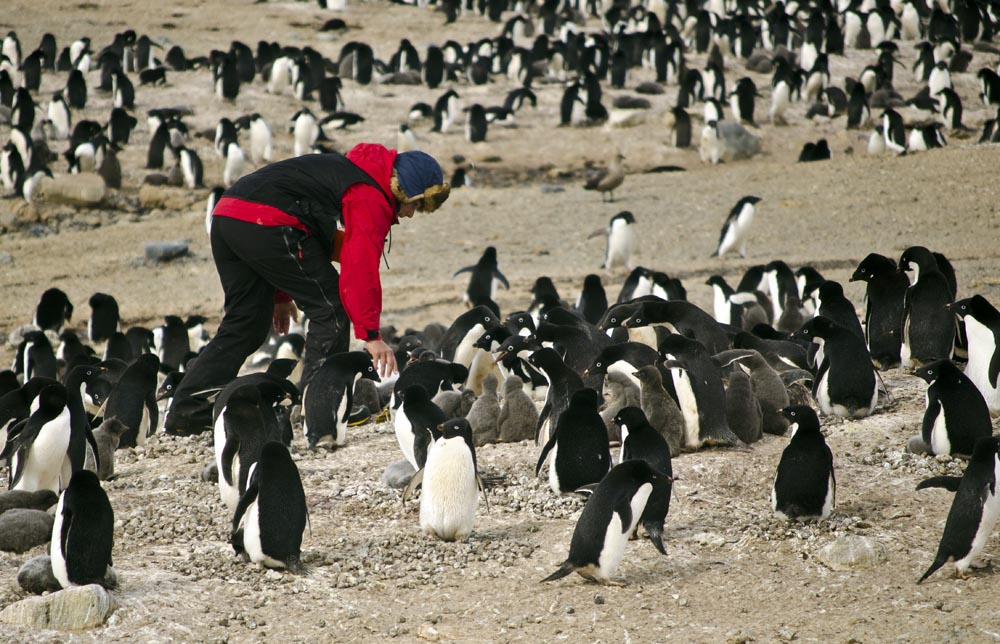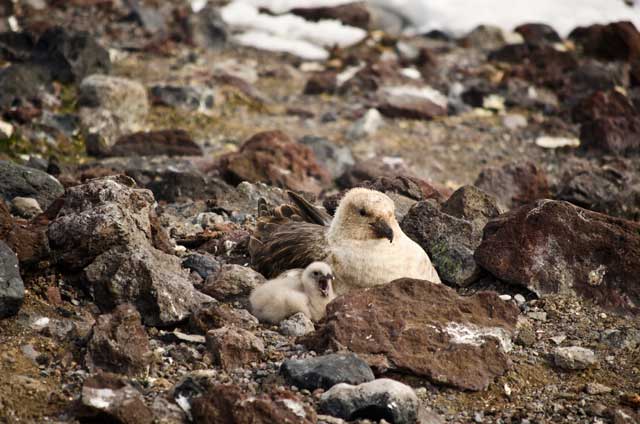|
Page 3/3 - Posted March 14, 2014
Blood, sweat and virusesMorning quickly becomes afternoon at Crozier, the passage of time only marked by the sun’s position high above the horizon during Antarctica’s 24-hour daylight summer. Jennings eventually meets up with team member Melanie Massaro Massaro heads up the physiology work on the penguins. She takes blood samples from adults returning from foraging trips to the sea. Devices attached to the birds provide details about their trips, including dive time-depth, temperature and an accelerometer that records body movement in three dimensions. Lescroël can use the latter to determine energy expenditures. From the blood samples, Massaro can then measure hormone levels such as corticosterone, which is an indicator of stress, along with other physiological parameters such as the amount of hemoglobin in the blood. Do physiological responses and diving capabilities explain the success in breeding by the superbreeders? “We’re trying to see how stressed they are, and also whether the ones with higher levels of hemoglobin are the better breeders,” Massaro explains. “Are these the athletes of the penguin world?” It takes a certain amount of human athleticism and endurance to do this kind of fieldwork day after day. Aside from the constant cold, researchers at Cape Crozier hike innumerable kilometers in the two to three months that they’re stationed at the field camp, a building smaller than a single-wide trailer. Everyone sleeps in their own tents, cooks and does duty shoveling snow and ice for drinking water. “It’s extremely physical. For me, it’s probably the hardest fieldwork I’ve ever done, and I’ve done loads of fieldwork,” Massaro says. “You’re either overdressed or underdressed. You’re never dressed the right way.” Despite the hardships, Massaro has worked in Antarctica for 12 years, the last five as a researcher in the U.S. Antarctic Program 
Photo Credit: Peter Rejcek
Open water in front of the beach at Cape Crozier allows easy access to foraging.
The 2013-14 field season was the second that virologist Arvind Varsani at the University of Canterbury “We’re finding some pretty interesting stuff in the ecosystem here, especially with the penguins,” he says while hiking back to the field camp along one of the main meltwater channels that slice through the Crozier colony. “It’s almost like finding a new species of primate somewhere. We’re finding new families of viruses here that have never been described.” It’s not unexpected, Varsani adds, considering only one percent of viruses worldwide have been described. “It’s not surprising that you come to a remote area and find something that has never been described or characterized before,” he says. “Nobody has ever looked.” NSF-funded research in this story: David Ainley, H.T. Harvey and Associates, Award No. 0944411 |



For USAP Participants |
For The Public |
For Researchers and EducatorsContact UsU.S. National Science FoundationOffice of Polar Programs Geosciences Directorate 2415 Eisenhower Avenue, Suite W7100 Alexandria, VA 22314 Sign up for the NSF Office of Polar Programs newsletter and events. Feedback Form |



